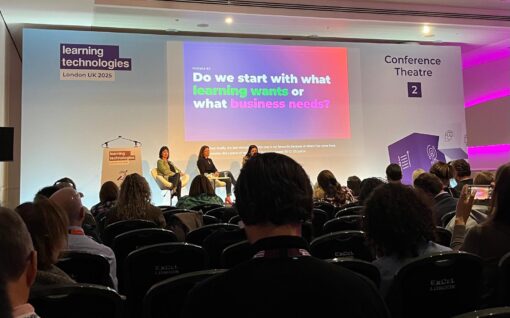“Invisible L&D”? It’s time to be seen

A quarter of business leaders say their L&D function regularly communicates with senior leaders to set goals, request feedback and report performance.
This is according to new research from Emerald Works entitled Same team, different sides?, which explores how L&D teams are perceived by business leaders. The report is well worth a look as it holds a mirror up to L&D. The research explores business leaders’ priorities and compares them with L&D’s priorities. It shows some clear disparities. It also shows the areas where L&D can better align itself with business priorities.
Alignment is nothing new for learning teams, which is why we don’t want to dwell on what the findings have to say about that. What we would urge learning teams to do is read page 11 of the report entitled ‘Invisible L&D’, so titled because this is how one respondent to the survey described L&D.
This part of the report shows that L&D teams are failing to communicate value to the business. The research shows that only 24% of leaders understood how L&D adds value to their business. And despite 90% of L&D professionals aiming to contribute to business transformation and innovation, only 21% achieve this goal.
The research shows that there is a perception problem. Even if learning teams are having a positive impact on business priorities, this might not be the perception of their senior stakeholders.
So, what’s the answer here? Here are a few thoughts:
1 Be clear who your senior stakeholders are
If you are not sure who your senior stakeholders are, then ask. Talk to the organisation’s leader and ask who else you should be talking to about how learning is supporting the business. Create a map of stakeholders, who they are, why they are important to you and what communications they need from you and how. Regularly review this list to ensure it reflects changes in the business.
2 Be clear on the strategic aims/vision of the organisation
If you are unclear on this you cannot show L&D’s impact on the business. Strategic vision and goals have to guide your work. If they don’t you are working in isolation, which will lead you to being seen as out of touch with the organisation. Talk to your CEO and get this information!
2 Educate senior stakeholders on L&D
Yes, you need to articulate learning impact but make sure your senior stakeholders understand in strategic terms what L&D brings to the organisation. This research suggests leaders have a lack of knowledge about L&D. Use this research to start a conversation about how L&D can help the organisation achieve its strategic goals. There’s a lot to talk about – skills, automation, talent management, change, transformation, for example. All of these will support and accelerate the sort of change businesses are facing post Covid-19.
3 Create a communications plan
This research shows that many learning teams are failing to communicate regularly with senior leaders. And it shows that this lack of communication is in part causing a perception problem. So, ask your stakeholders how they like to be kept up to date – channels and formats – and be proactive in sharing what you are working on, where you are having impact and how you are having impact. Focus your comms around how L&D is supporting strategic goals. Remember, this is about building strong relationships. No one likes to be kept in the dark.
At our recent LearnPatch Learning Technologies Barcamp event, internal L&D professionals shared how they had helped their organisations through the pandemic. L&D teams have shown how effectively they can support organisations through crisis and change. If that’s your experience of the pandemic then make sure you build on the positive impact you have had. There is a danger that L&D is sidelined because it is not seen a strategic player. Use your role though the pandemic to build your influence in order to show how L&D can help the organisation to achieve its strategic roles.
If you and your team would like help communicating your value and building influence, then we can help. Contact us at team@insightsmedia.co.uk

